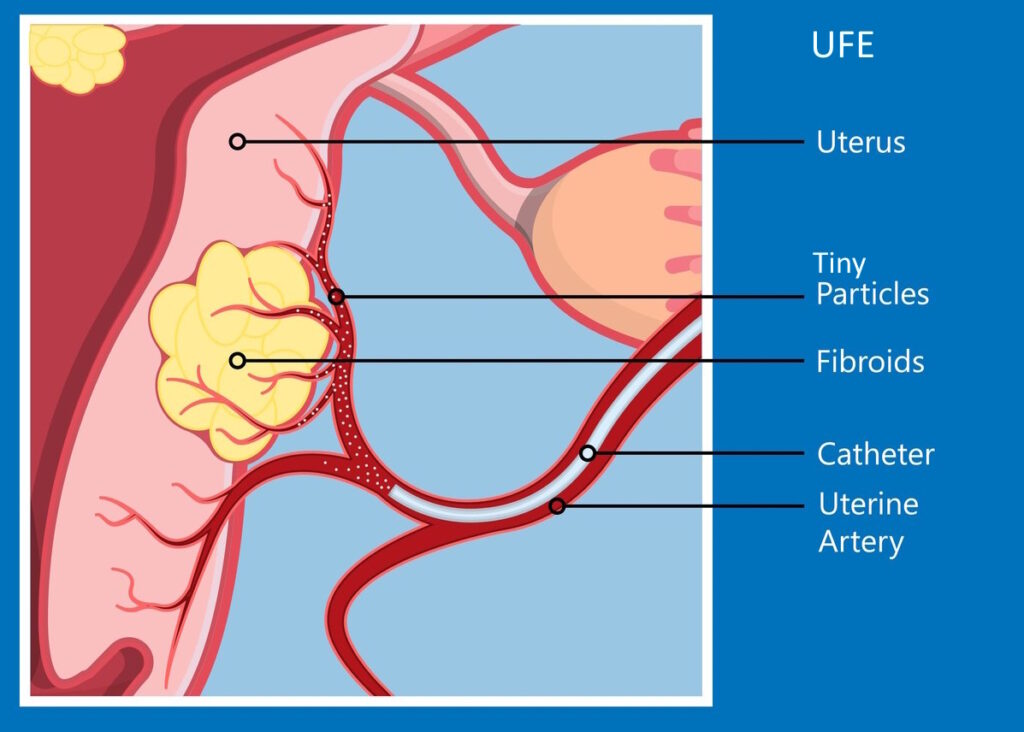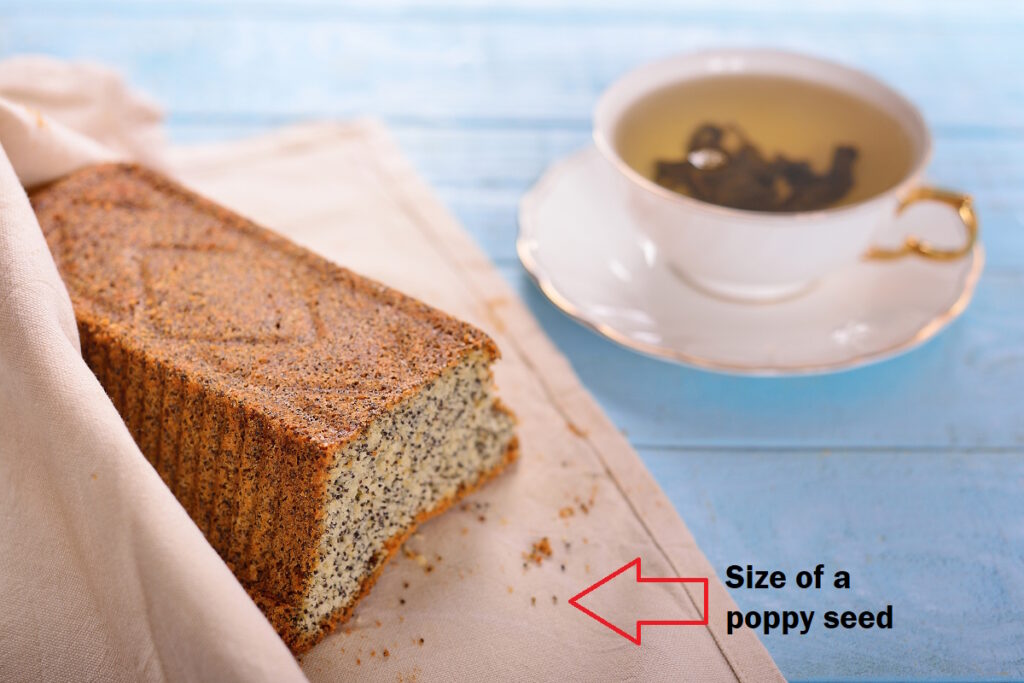Charice* has heard nothing but great things about uterine fibroid embolization (UFE). After all, the benefits are hard to ignore—no hospital stay, shorter recovery time, all fibroids treated at once, finally being symptom-free after almost a year of pain and life-interruptions from her heavy periods. Just hearing that makes choosing UFE an easy decision. This is especially true when the alternative is a lengthy and bloody surgical procedure. But if there’s one thing that keeps Charice from committing to UFE, it’s a concern about the materials used during the treatment.
This is a fair question and one that’s commonly asked as women become more educated about UFE and want to understand specific details about how exactly uterine fibroid embolization works. Our team at Fibroid Institute Texas is at the forefront of this non-invasive treatment option and pride ourselves on educating and empowering women to take control of their healthcare options and get back to enjoying life. So rather than shy away from this question, let’s answer it and eliminate any lingering concerns—honestly and with as many specifics as possible.
What Are Embolic Materials in UFE?
The beauty of the uterine fibroid embolization procedure is that it is an alternative to surgical procedures such as a hysterectomy and myomectomy. Rather than create large incisions in the body to “remove” your painful fibroids, uterus, and possibly your fallopian tubes and ovaries, UFE blocks blood flow within the blood vessels to the fibroids. You see, having access to this blood flow is what keeps your fibroids alive and growing. So, by cutting off the blood supply, the fibroids simply shrink and die.

Below is the basic messaging most women hear about how UFE works:
- An expert interventional radiologist makes a small puncture on the patient’s wrist.
- Tiny particles known as embolic material are injected into the body through a catheter.
- The embolic material goes to work, blocking only nonessential blood vessels leading to the fibroids.
The result is relief from a variety of uncomfortable symptoms, including but not limited to the following:
- Painful periods, including heavy or inconsistent cycles
- Debilitating cramps, pelvic pain, and pressure
- Back or leg pain
- Bloating or swelling in the lower abdomen
- Weight gain, pregnancy-looking belly
- Pain during sexual intercourse
- Urinary frequency
- Constipation, diarrhea, and rectum discomfort
While this sounds great, many women have learned over time that the particles being used can be made of plastic. And the idea of plastic particles—or any particles for that matter—being introduced into the body scares them. Our experienced team understands these concerns. But it is important to know that the particles are made of materials that are very safe—similar to the material in a contact lens. And the particles are very small. How small, you ask? Try 500-700 or 700-900 microns, about the size of a poppy seed.

Furthermore, the interventional radiologist chooses the size of the embolic material used in your uterine fibroid embolization procedure to ensure that only the blood supply to the fibroids is blocked and not that of the surrounding organs. Due to their texture and shape, embolic material (made of gelatin or plastic) is confined to the specific blood vessels related to your individual fibroids and creates a blockage that keeps the fibroids from receiving the nutrients they need to survive.
UFE Is a Safe and Effective Fibroid Treatment Option
Three out of four women will develop fibroids during their lifetime. These non-cancerous tumors develop from the muscle tissue of the uterus, and while not all of them cause pain, many do. In fact, they can be very painful, mostly because they can develop in different locations, differ in size, and either stay that way or grow at different rates.
Knowing where to look for the right fibroid doctor can be challenging and even a little overwhelming. After all, many women admit they know little about fibroids—at least initially. They hope to be educated, listened to, and even consoled emotionally by their primary provider, and some are. But statistics also show that most women aren’t diagnosed by their gynecologist right away. Even when they are, 73% who heard of non-surgical treatment such as uterine fibroid embolization (UFE) didn’t hear about it from their gynecologist first.
This lack of knowledge about fibroids, patient education, and guidance on their next steps, is a disservice to women everywhere. This is why Fibroid Institute has been so diligent about going beyond the walls of our office to spread awareness, answer tough questions from patients and gynecologists, and help more women understand what their options are and put them at ease about their unique journeys. Having a gynecologist or fibroid doctor in your corner—someone who is open to back-and-forth dialogue, answering every question or concern, setting expectations along the way, and honoring your wishes—is one significant way to help feel more in control and have less fear of treatment.

With UFE, there is no bloody procedure and lengthy recovery times. More importantly, you have a say over what happens to your body. This procedure is quick and effective, and rather than making incisions, the experienced fibroid specialists at Fibroid Institute utilize the particles we discussed earlier to block blood flow to the fibroids rather than opting for surgery and a potentially lengthy recovery process.
Advantages of UFE for Fibroid Institute patients include:
- Over 90% of patients see dramatic improvement in symptoms
- All fibroids may be treated at the same time
- In-office procedure instead of hospital stay
- Recovery time is 7-10 days
- Tiny wrist puncture, no need for vaginal access
- Avoid side effects of pharmaceutical hormone therapies
- Procedure typically completed in under an hour
- No incisions, which means no surgical scarring
It is important for women to be screened for uterine fibroids, especially if they have a history of fibroids in their family, if they notice anything different about their periods, or if they’re currently experiencing any of the symptoms mentioned above. If you do receive a confirmed diagnosis, remember that you have options.
Our Fibroid Experts Are Here To Answer Your UFE Questions
Know you have options when it comes to treating your symptomatic uterine fibroids. Furthermore, you need to feel comfortable asking whatever questions you may have about your unique diagnosis, treatment options, the process involved, and the specific type of materials used. Far too many patients get concerned about having a medical procedure and shy away before giving their doctor a chance to answer questions and ease concerns. We are here to help you reclaim your life and ensure you feel confident about your choice.
Thousands of women visit Fibroid Institute Texas year-round to find relief from their fibroid pain. We are happy to cater to those needs and offer a nonsurgical solution: uterine fibroid embolization. UFE is the gold standard in non-surgical fibroid treatment, and at Fibroid Institute’s multiple locations in Houston and Dallas, we help thousands of women avoid fibroid surgery and find relief from their fibroid symptoms. Meet some of these women here:
Our team includes experts who are passionate about helping women become #FibroidFree. As board-certified interventional radiologists, our doctors are highly experienced UFE specialists at a practice that is 100% focused on fibroid issues.
Most major medical insurance providers cover the cost of UFE. Get started now with Fibroid Institute Dallas at 214-838-6440 or with Fibroid Institute Houston at 713-903-3733 or complete the form below.
"*" indicates required fields
This information is not a substitute for professional medical advice. Prior to starting any new treatment or if you have questions regarding a medical condition, always seek the advice of your doctor or other qualified health provider.
Fibroid Institute Texas serves the Dallas and Houston areas including Addison, Carrollton, Plano, Frisco, Craig Ranch, McKinney, Allen, Fort Worth, Grand Prairie, HEB, Arlington, Hutchins, Irving, Duncanville, DeSoto, Cedar Hill, Lancaster, Cockrell Hill, Highland Park, University Park, Park Cities, Garland, Mesquite, Richardson, Dallas, Sherman, Houston, Sugar Land, Katy, Webster, Clear Lake, The Woodlands, Universal City, Spring, Kingwood, Stafford, Conroe, Texas City, Cypress, League City, Bellaire, and more.
*Patient stories are true. Names and/or photos may be changed to protect patient confidentiality.

